Ensayo fotográfico: En RDC, las mujeres refugiadas reconstruyen vidas con determinación y esperanza
Fecha: 16 June 2017
El actual conflicto político en Burundi ha obligado a cientos de miles de personas a huir de sus hogares y buscar refugio en el país vecino de República Democrática del Congo (RDC). En el campamento de personas refugiadas de Lusenda, que alberga a más de 16.000 personas refugiadas, la mayoría son mujeres y niñas. Cientos de personas refugiadas han asistido a los centros multiusos Refugio Seguro, establecidos por ONU Mujeres [1], para obtener protección y empoderamiento económico y social. Presentamos una mirada a la vida diaria en el campamento y en los centros.
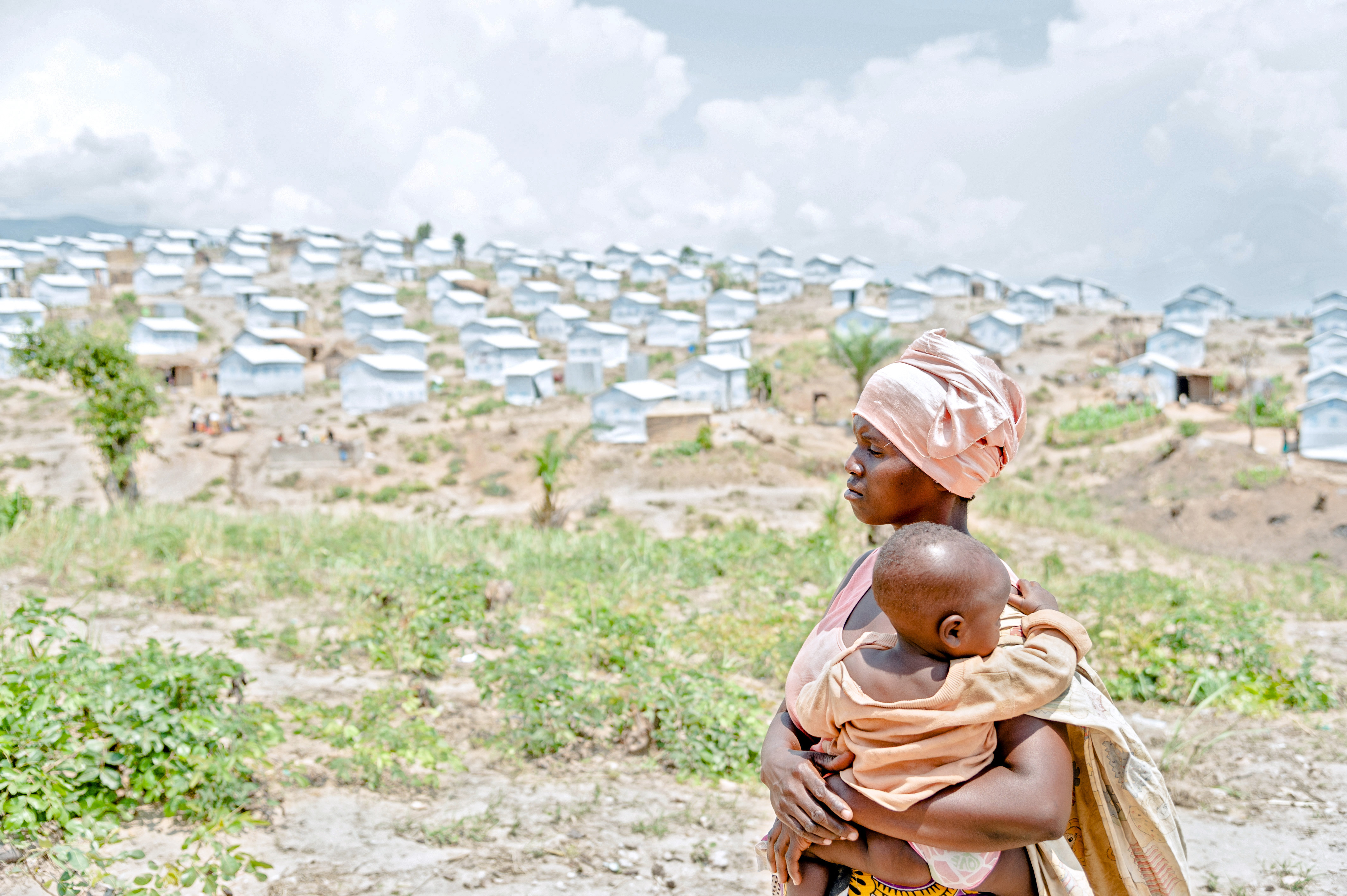
Cuando su marido fue arrestado durante la crisis política de 2015, Luscie, de 32 años, huyó de la provincia de Bujumbura en Burundi con sus ocho hijas e hijos, sin nada más que las ropas que llevaban puestas. Desde entonces han estado en el campamento de personas refugiadas de Lusenda en RDC.
Foto: ONU Mujeres/Catianne Tijerina
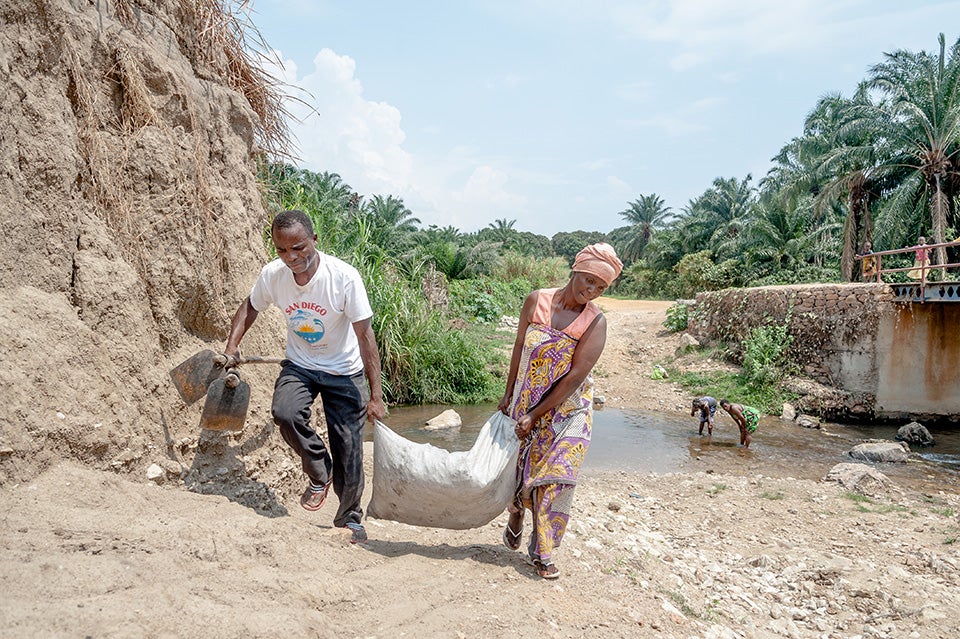
Con la ayuda de un trabajador del campamento, Luscie, a la derecha, carga piedras y barro del río de regreso al centro multiusos de ONU Mujeres para utilizarlos en la construcción de una estufa de barro. ONU Mujeres ha establecido tres centros multiuso Refugio Seguro, que ofrecen asesoramiento psicosocial, referencias, capacitaciones y programas de dinero por trabajo.
Foto: ONU Mujeres/Catianne Tijerina
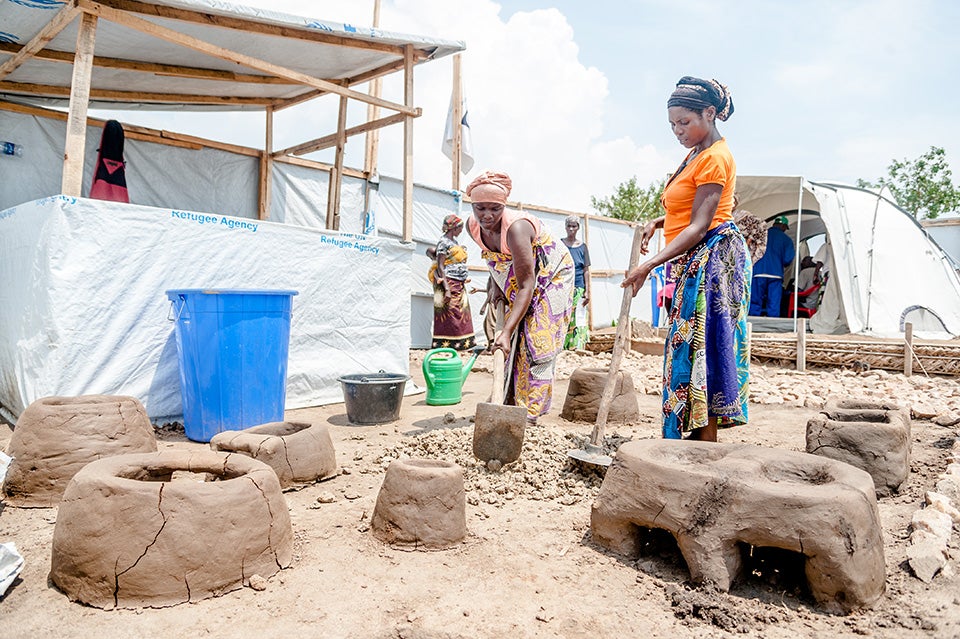
Luscie, a mano izquierda, y Marita, a mano derecha, trabajan para crear una estufa de barro hecha a mano. En los centros multiusos, han aprendido a hacer estufas que permiten reducir el costo de alimentar a sus familias. “Requiere de menos carbón y la superficie se mantiene caliente por más tiempo,” señala Marita.
Foto: ONU Mujeres/Catianne Tijerina
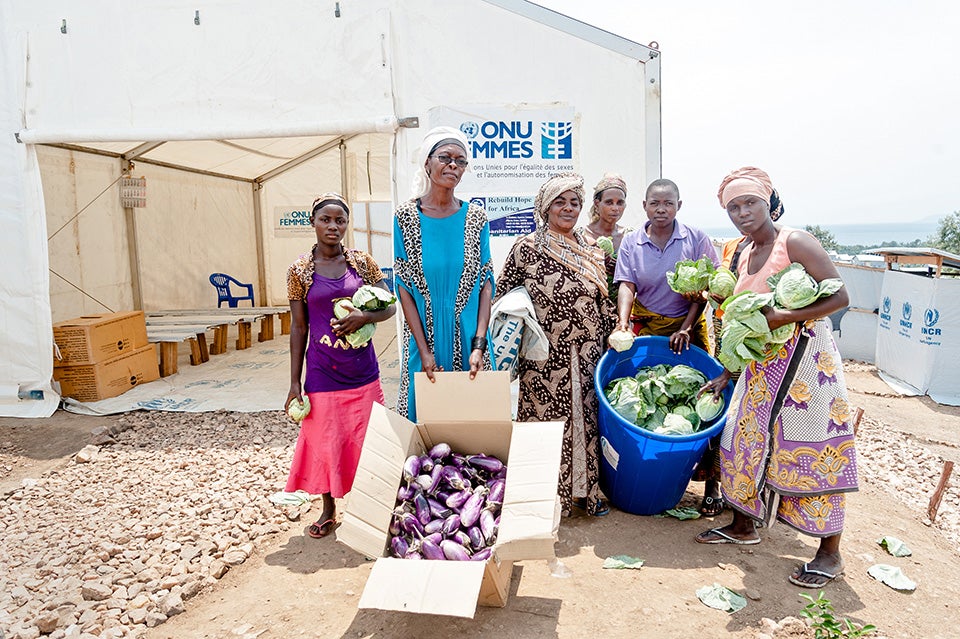
Asimismo en el centro multiusos, Luscie, en el extremo derecho, se unió a los esfuerzos colectivos por cultivar vegetales para compartir las ganancias. Su objetivo: ganar suficiente dinero para remplazar las prendas rasgadas de sus hijas e hijos.
Foto: ONU Mujeres/Catianne Tijerina
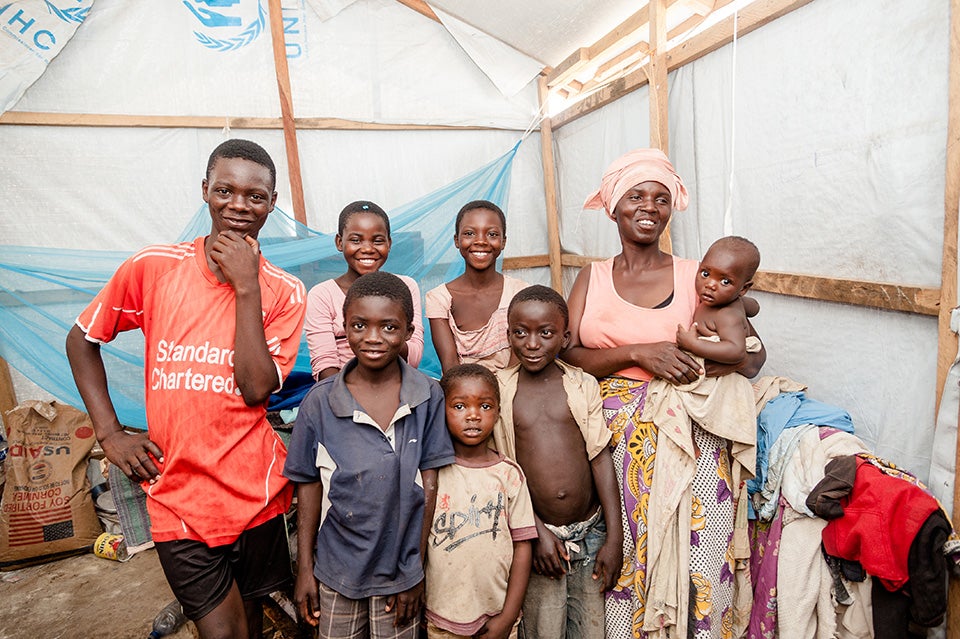
Luscie con sus hijas e hijos. Muchas mujeres en el campamento son viudas y han tenido que convertirse en cabezas de familia, asumiendo la responsabilidad por las niñas y los niños, las personas enfermas y ancianas. Necesitan servicios y recursos. A través de los centros multiusos, cerca de 300 mujeres en Lusenda han obtenido empleo temporal mediante programas de dinero por trabajo. Otras 80 mujeres y niñas adquirieron habilidades para manufacturar jabón y 38 más aprendieron cómo operar un restaurante del campamento.
Foto: ONU Mujeres/Catianne Tijerina
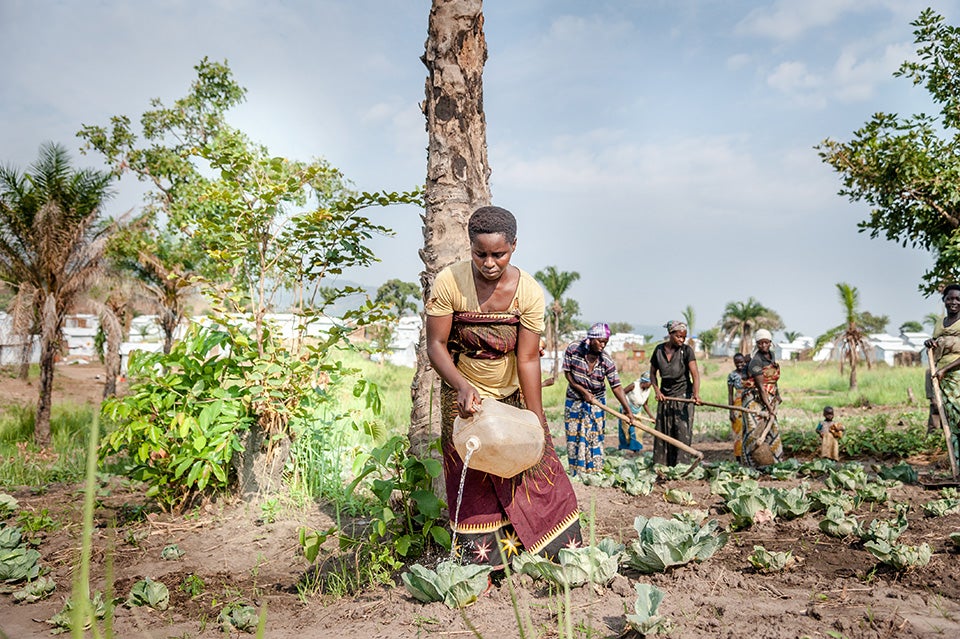
Las mujeres que forman parte del programa agrícola se reúnen temprano para atender los cultivos que siembran de manera colectiva.
Foto: ONU Mujeres/Catianne Tijerina
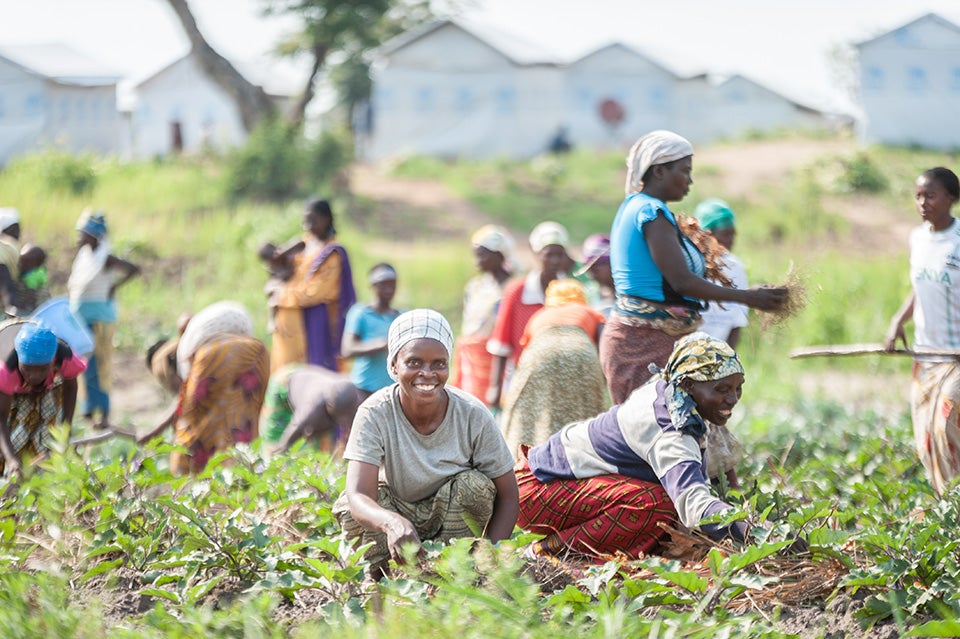
Las mujeres aprenden a cultivar muchos tipos distintos de cosechas. Luego de trabajar en la colectiva, algunas pueden plantar y cosechar verduras fuera de sus casas temporales en el campamento de personas refugiadas.
Foto: ONU Mujeres/Catianne Tijerina
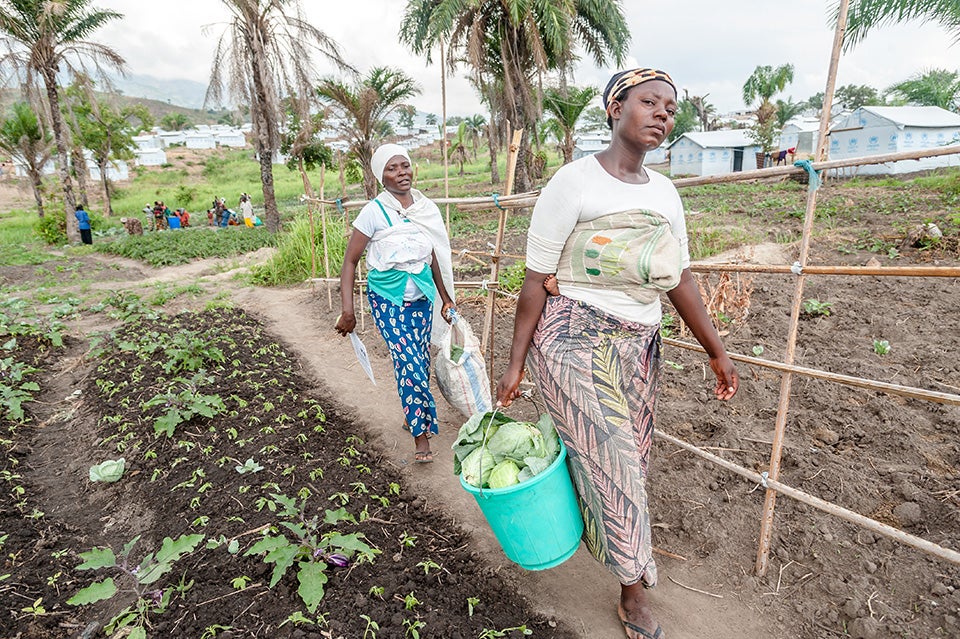
Con la asistencia de ONU Mujeres, en 2015, 264 mujeres refugiadas contribuyeron a la seguridad alimentaria del campamento luego de ser capacitadas en la cultivación de verduras.
Foto: ONU Mujeres/Catianne Tijerina
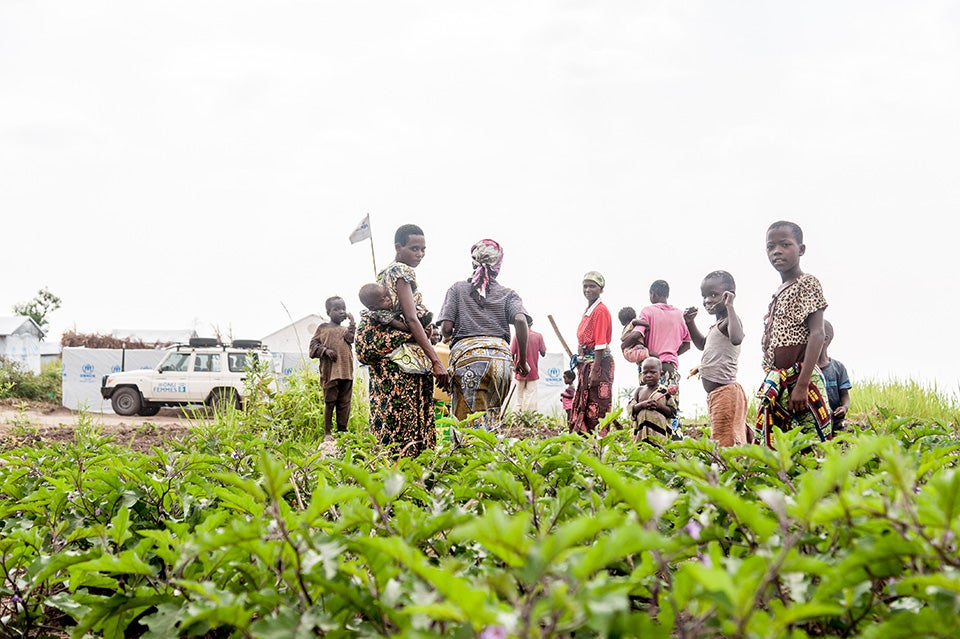
Al terminar con su trabajo matutino, las mujeres a menudo regresan al centro multiusos de ONU Mujeres, donde también pueden encontrar información sobre los derechos de las mujeres y recibir apoyo y asesoría psicosocial. En el campamento, las mujeres refugiadas enfrentan aislamiento, hostigamiento, violencia doméstica y otros tipos de violencia sexual y violencia de género.
Foto: ONU Mujeres/Catianne Tijerina

Celestine, una refugiada en el campamento de Lusenda, lidera una presentación de baile organizada por jóvenes en el centro multiusos en octubre de 2015. Los centros también funcionan como espacios seguros para que las mujeres se sientan cómodas y pueda expresarse, sin miedo a ser juzgadas o maltratadas.
Foto: ONU Mujeres/Catianne Tijerina
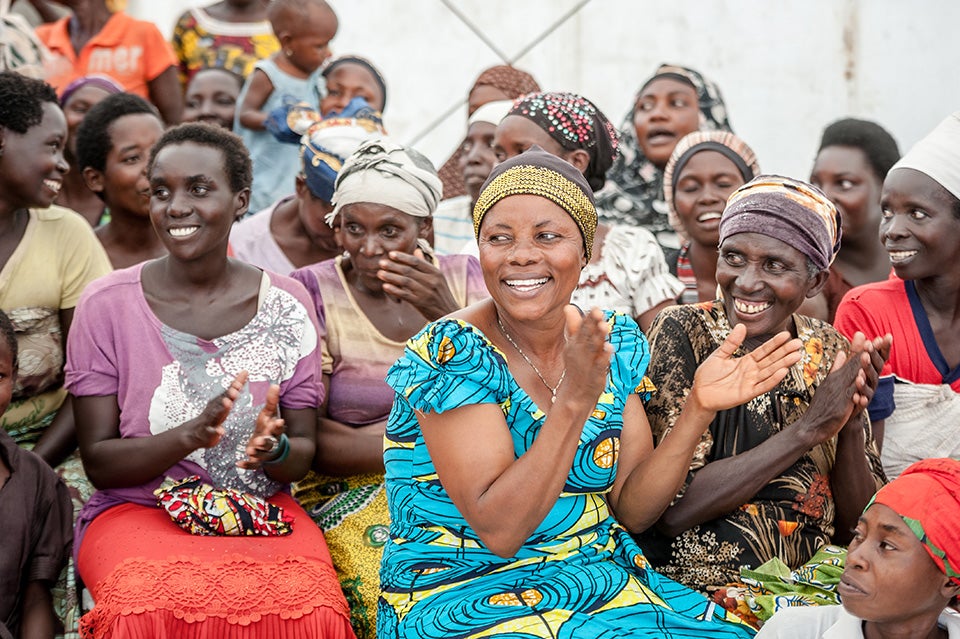
En medio de todos los retos cotidianos, las mujeres que asisten a la presentación de baile comparten juntas un momento de risas. Uno de los objetivos de los centros es ayudar a las mujeres refugiadas a socializar, hacer nuevas amistades y reconstruir sus redes sociales. “¡No debemos rendirnos sino luchar por una mejor vida para nuestras hijas y nuestros hijos!” exclaman las mujeres en el campamento de personas refugiadas de Lusenda.
Foto: ONU Mujeres/Catianne Tijerina
ONU Mujeres trabajo de modo que las mujeres y niñas en crisis prolongadas tengan acceso a los servicios que necesitan para asegurar su recuperación y desarrollar su resistencia ante futuras crisis.
Para imágenes de gran formato, también puede encontrar este ensayo fotográfico publicado en Medium.
Para mayor información sobre Mujeres en la acción humanitaria, visite nuestra sección En la mira.
Notas
[1] The UN Women multipurpose centres are run in partnership with the United Nations High Commission for Refugees (UNHCR), its local partner Rebuild Hope for Africa and the Women Refugee Committee, with funding from the Government of Japan.